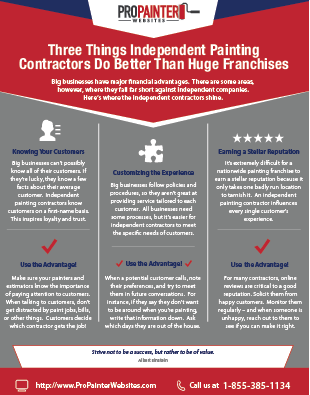When you're budgeting for an industrial paint task, it's very easy to overlook particular costs that can creep up on you. You may think you have actually covered whatever, however surprise expenses like surface area prep work and allows can promptly add up. By identifying these possible challenges at an early stage, you can create a more precise spending plan. Yet what specific variables should you take into consideration to prevent those pricey shocks? Let's discover just how to evaluate your project's scope properly.
Assessing the Extent of Your Job
Before diving right into an industrial paint work, it's important to assess the range of your job.
Beginning by establishing the areas that require paint and the overall square video entailed. Consider the sort of surfaces, whether they're drywall, timber, or metal, as this influences the materials and labor needed.
Next, examine the condition of these surface areas; any type of repairs or prep work will impact your timeline and budget.
Do not neglect to make up the sort of paint you desire, as top quality can vary substantially in price.
Ultimately, consider access. If certain areas call for unique equipment or added precaution, you'll need to factor those expenses right into your general spending plan.
Comprehending these components will set you up for success.
Identifying Potential Hidden Expenses
As soon as you've examined the scope of your commercial paint work, it's time to think about the potential hidden expenses that can develop.
You might neglect expenses like surface area prep work, which can consist of cleansing, patching, or priming. Weather-related hold-ups can likewise result in unexpected costs, so watch on the projection.
If your building has several levels or hard-to-reach locations, you might sustain added labor charges. Additionally, consider the expense of authorizations or inspections that may be needed by local laws.
Lastly, don't forget about the possibility for increased expenses if you need unique coatings or materials. By determining these feasible concealed expenses ahead of time, you can budget better and prevent surprises down the line.
Creating a Backup Plan
As you move forward with your commercial paint job, it's crucial to develop a contingency strategy that addresses unforeseen challenges.
Start by determining potential dangers, like weather condition hold-ups or supply lacks. https://exteriorpaintersnearme76421.activoblog.com/41557852/explore-just-how-the-right-business-paint-choices-can-help-in-reducing-power-prices-and-improve-your-workplace-yet-there-s-more-to-check-out-regarding-maximizing-your-savings of your spending plan-- normally 10-15%-- to cover these unanticipated costs.
Next off, established clear timelines and interact them with your team, so everyone's on the very same page. Consistently review your plan and change it as required, particularly if conditions alter.
Ultimately, ensure https://www.housedigest.com/996398/how-to-sponge-paint-your-wall/ have reputable calls, such as suppliers and subcontractors, that can assist you browse any type of issues that occur.
Final thought
To conclude, budgeting for your business paint task requires careful preparation and recognition of possible surprise costs. By assessing the scope of your project and recognizing locations where costs might emerge, you can create a more accurate spending plan. Constantly consist of a backup plan to manage unexpected issues. Staying adaptable and evaluating previous jobs will certainly likewise help you make notified choices. With these suggestions, you'll be better prepared to manage your costs and make sure a successful end result.
